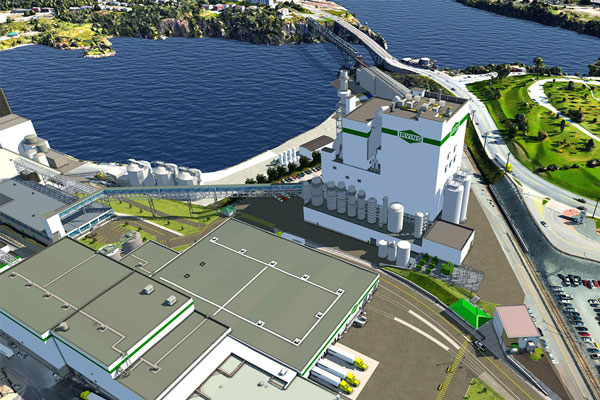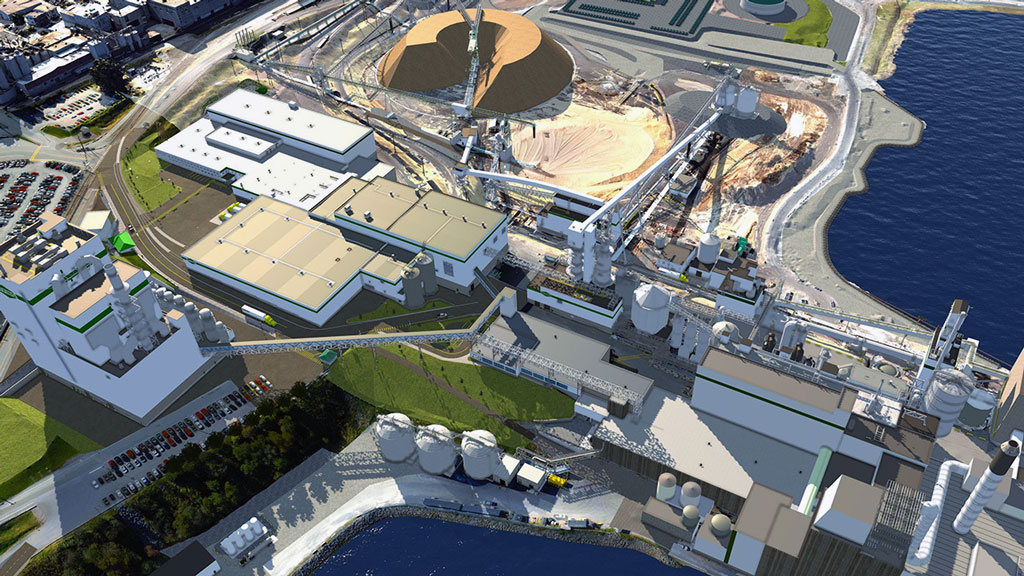Pre-planning engineering work has started for construction of a new recovery boiler at an Irving Pulp & Paper Ltd. mill on the west side of Saint John, N.B., that will increase green energy capacity at the facility and allow it to dry more pulp and nearly double production capabilities.
The $1.1-billion project, known as NextGen, is the largest investment in the Canadian forest products industry since 1993 and one of the largest industrial construction projects in the history of New Brunswick.
It will make the site one of the top producing kraft pulp mills in the world.
The company has filed an environmental impact assessment (EIA) report on the project with the New Brunswick Department of the Environment and Local Government which oversees the process.
Construction is expected to begin once the EIA process is complete, likely in spring 2025.
The project entails replacing and decommissioning a 1970s-era recovery boiler at the historic mill that runs on Bunker C heavy fuel oil and is nearing the end of its life. It will enable the plant to increase production by 66 per cent and facilitate several new environmental upgrades, including a new turbine and green energy generator. Construction will take four to six years.
“These upgrades will ensure Saint John’s pulp mill continues to be at the heart of the province’s forest products supply chain, and provides a regional market for chips, bark and pulpwood,” Irving Pulp & Paper vice-president Mark Mosher explained in a prepared statement.
Arlene Dunn, chief executive officer of the Saint John Construction Association, said in a social media statement the project will play a crucial role in securing the forest sector for the next 50 years as well as decarbonizing the electricity grid by producing 120 megawatts of renewable power.

“Projects like this not only boost the skilled trades sector but also provide employment opportunities for local workers and contractors. It ensures knowledge transfer and skill development, ultimately contributing to the growth and sustainability of the local region and the province.”
The new recovery boiler will be 20-storeys tall and housed in a 250-foot-tall building to be erected in an area that is presently a parking lot at the west side site. It will enable the plant to increase power output and generate enough energy to operate without buying off-plant power.
The building itself will be a steel-framed structure on an engineered concrete slab and have steel cladding.
Other key environmental upgrades include the construction of a steam turbine for green energy generation and technology improvements to reduce water consumption. Decommissioning the oil-fired boiler will reduce the amount of CO2 emissions emitted from the mill.
The new recovery boiler and steam turbine, along with construction of a new lime kiln, will enable the mill to jump from 1,000 air-dry metric tonnes of pulp to 1,800 daily, while increasing energy output to 140 MW of power from 30 MW. Excess power will be sold to New Brunswick Power, according to the EIA.
During the four-year construction phase, about $539 million will be spent directly and indirectly on labour.
Meanwhile, the project will generate more than $172 million in tax revenue for provincial and local governments, $539 million in employment income, boost the provincial GDP by $711 million, generate $409 million in household spending, provide opportunities for hundreds of local contractors, and create more than 2,200 person years of employment for skilled trades such as ironworkers, millwrights, carpenters, masons and labourers.
Over the long term, the mill will contribute $10 million annually to provincial and local tax revenues, lead to an increase of 600 jobs supported in the forest supply chain and from induced effects, and boost employment income by 38 per cent in the forest products supply chain.
According to the EIA, the new recovery boiler will be the most efficient in North America, if not the world. Air emissions of nitrogen and sulphur dioxide and particulate matter will be substantially reduced. Auxiliary fuel in the recovery boiler and a recausticizing plant will be clean burning natural gas, thereby reducing greenhouse gas emissions by eliminating heavy fuel.
The new boiler will produce more than double the steam quantity output of the existing model. Steam will be distributed to the turbines and turn the generators, making the mill energy self-sufficient.
Presently, a water vapour plume is emitted from the recovery boiler stack at the mill but the flue gas stack of the new boiler will use dry technology to scrub the air emissions and reduce the plume.
Increased production at the mill will require more softwood wood chips but it is not expected to increase the area of forest harvested in New Brunswick, as chips will be obtained from other sources. Improved forest utilization from all stakeholders, including private woodlot owners, will entail using the tops of trees that are rotten, crooked or forked and left in the woods to decompose, as well as harvesting mature stands planted by the company nearly 50 years ago.
The mill has undergone numerous upgrades over the years. Nearly 500 people work at the facility, and it is the top industrial employer in New Brunswick.





Recent Comments
comments for this post are closed